Integrating hydroponics in education offers hands-on STEM learning opportunities. Classroom hydroponic systems engage students in practical projects, fostering skills in sustainability and environmental science. DIY hydroponics projects empower students to set up systems, exploring urban gardening and food security concepts.
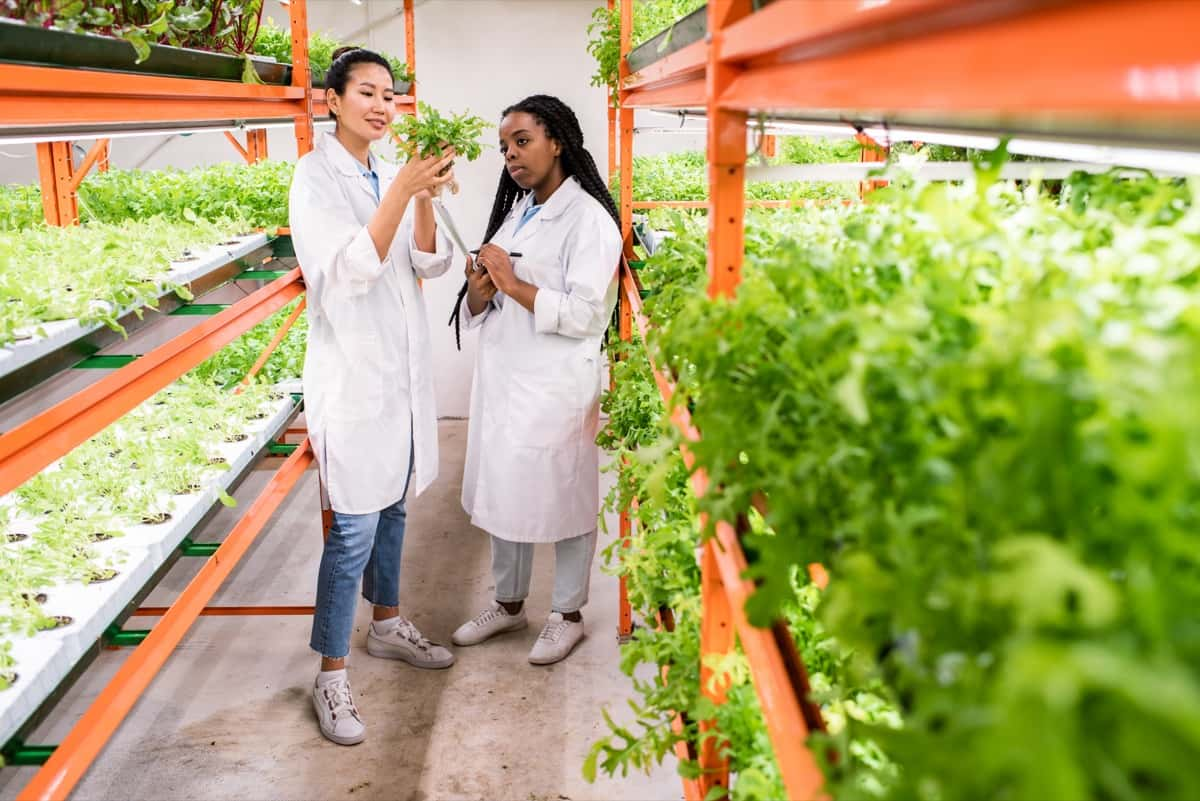
STEM hydroponics curriculum enhances critical thinking and problem-solving abilities. Benefits include experiential learning, understanding hydroponic technology, and career skill development. By teaching hydroponic gardening, schools promote sustainable practices and empower students to address global challenges. Urban hydroponics initiatives and environmental science projects further enrich the educational experience, preparing students for a future focused on innovation and sustainability.
Bringing Hydroponics to Classroom
Introduction to Hydroponics in Education
Hydroponics, a soilless cultivation method, is revolutionizing education by offering hands-on learning experiences for students. As schools seek innovative ways to engage learners in science, technology, engineering, and mathematics (STEM), hydroponics emerges as a powerful tool for cultivating curiosity and fostering critical thinking skills.
Benefits of Hydroponic Gardening for Students
Hydroponic gardening provides numerous benefits for students. Beyond the traditional classroom setting, it offers practical applications of scientific principles, allowing students to witness plant growth firsthand. Moreover, hydroponics teaches sustainability by promoting water conservation and reducing environmental impact.
Overview of Hydroponic Systems
Hydroponic systems vary in complexity, from simple setups like wick and deep water culture (DWC) to advanced techniques such as nutrient film technique (NFT) and ebb and flow. Understanding the basic types of these systems is essential for creating successful classroom gardens.
Understanding the Basics of Hydroponics
At the core of hydroponics lies the efficient delivery of nutrients and water directly to plant roots. Key components include nutrient solutions, growing mediums, pumps, and reservoirs. By eliminating soil, hydroponics optimizes resource utilization and accelerates plant growth.
In case you missed it: 7 Best Hydroponics Kits in India: Guide to Buy Top Hydroponics Kit at Affordable Price
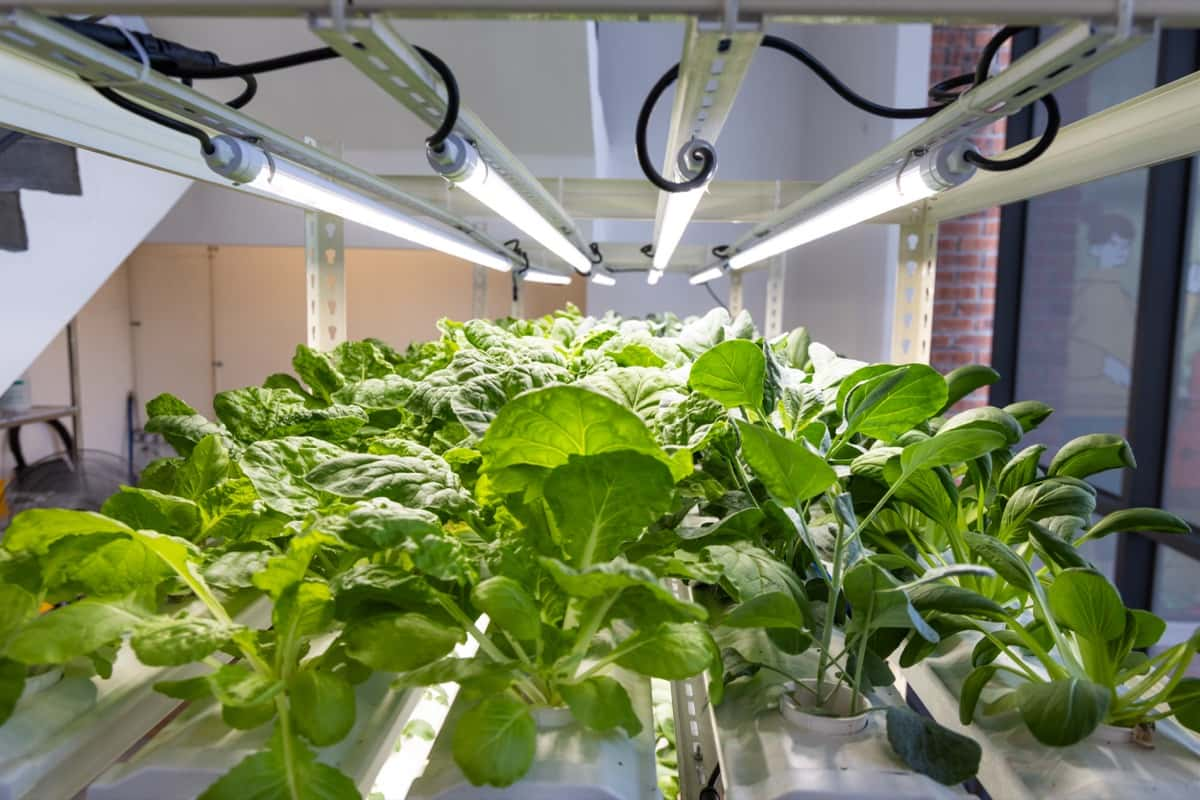
The Science of Hydroponics: Nutrients and Water
In hydroponic gardening, nutrient solutions play a major role in providing these essential elements for plant growth. Understanding the principles of plant nutrition and the dynamics of water uptake is crucial for maintaining healthy plants.
Types of Hydroponic Systems for Classrooms
Classroom hydroponic systems range from beginner-friendly setups to more advanced configurations. Each system offers unique advantages and challenges, allowing educators to tailor the partical learning experience to their student’s needs and abilities.
Simple Systems: Wick and Deep Water Culture (DWC)
Wick and deep water culture systems are ideal for beginners due to their simplicity and low maintenance requirements. These systems rely on passive nutrient delivery methods, making them suitable for educational environments.
Advanced Systems: Nutrient Film Technique (NFT) and Ebb and Flow
NFT and ebb and flow systems offer more control over nutrient delivery and oxygenation, making them suitable for advanced classrooms. These systems require careful monitoring and adjustment but provide valuable insights into plant physiology and hydroponic technology.
Setting Up Your Classroom Hydroponic Garden
Creating a successful classroom hydroponic garden requires careful planning and preparation. Educators must gather the necessary equipment and materials, follow a step-by-step setup guide, and ensure proper plant care practices are implemented.
Equipment and Materials Checklist
Before embarking on a hydroponic gardening project, educators must procure essential equipment such as grow lights, pumps, reservoirs, pH meters, and nutrient solutions. Additionally, selecting suitable growing mediums and containers is essential for plant health and growth.
Step-by-Step Setup Guide
To set up a classroom hydroponic garden, educators must follow a systematic approach, starting with assembling the equipment and preparing the growing area. Next, they must mix nutrient solutions, install lighting and irrigation systems, and introduce plants to the hydroponic environment.
Plant Science and Hydroponics
Hydroponic gardening provides a unique opportunity to explore plant science concepts in a hands-on manner. From germination to harvest, students can observe and analyze the plant life cycle, photosynthesis, respiration, and nutrient uptake processes.
In case you missed it: Pros and Cons of Wick Hydroponics: Ease of Setup to Limitations
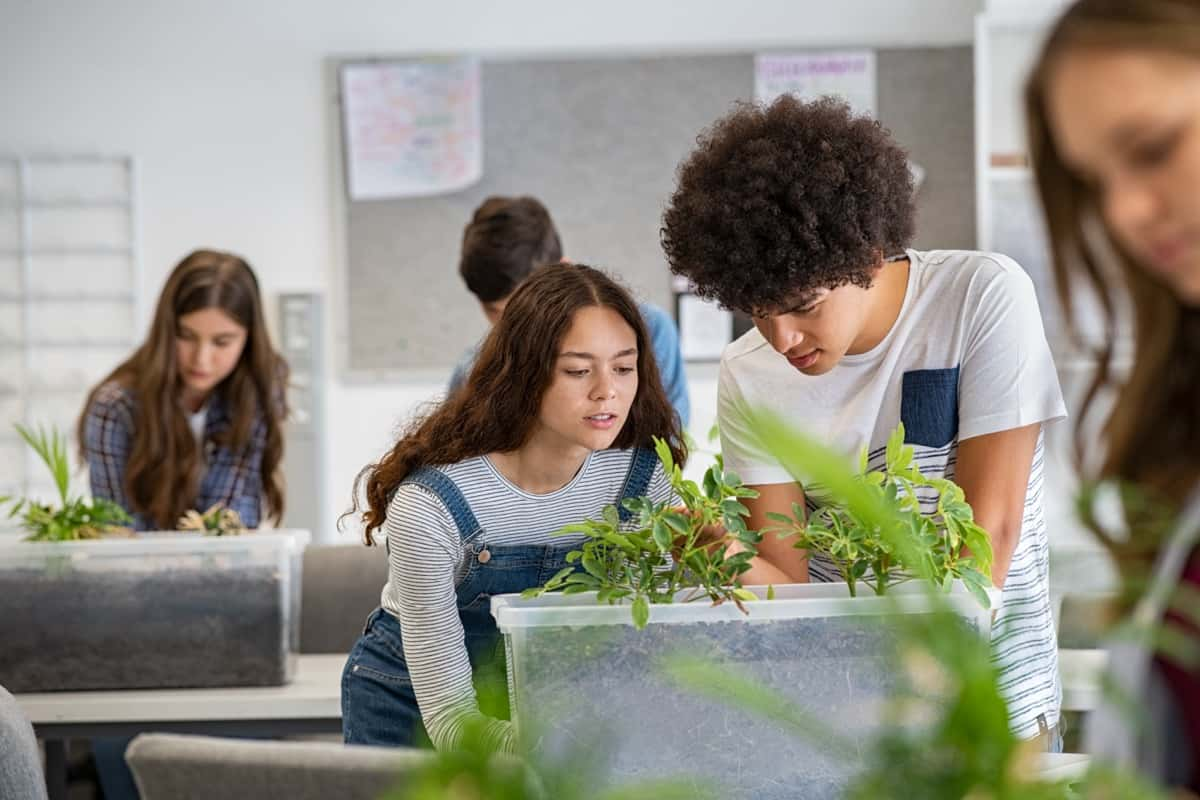
Germination to Harvest: The Plant Life Cycle
Understanding the differnet stages of the plant life cycle is essential for successful hydroponic gardening. Students learn about seed germination, vegetative growth, flowering, and fruit development, gaining insights into plant biology and development.
Photosynthesis and Respiration in Hydroponic Gardens
Photosynthesis and respiration are fundamental processes that drive plant growth and metabolism. In hydroponic gardens, students can observe these processes in action, exploring how light, water, and nutrients influence plant physiology.
Nutrient Management and Plant Health
Maintaining proper nutrient levels is critical for plant health and productivity in hydroponic systems. Students learn how to mix and manage nutrient solutions, identify and address nutrient deficiencies, and monitor plant health indicators.
Mixing and Managing Nutrient Solutions
Hydroponic nutrient solutions must provide all essential elements in the correct proportions to support plant growth. Students gain practical experience in mixing nutrient solutions, adjusting pH levels, and monitoring nutrient concentrations to ensure optimal plant nutrition.
Identifying and Addressing Plant Nutrient Deficiencies
Nutrient deficiencies can manifest as visible symptoms in plant leaves and tissues. By learning to recognize these symptoms, students can diagnose nutrient deficiencies and take corrective action to restore plant health and vitality.
Integrating Hydroponics into Curriculum
Hydroponic gardening offers endless opportunities for integrating STEM concepts into the curriculum. Educators can develop interdisciplinary projects and activities that engage students in scientific inquiry, engineering design, and mathematical analysis.
STEM Applications and Projects
Hydroponics lends itself to a wide range of STEM applications and projects. From designing and building hydroponic systems to conducting experiments on plant growth factors, students can explore scientific principles in a hands-on, inquiry-based manner.
A STEM hydroponics curriculum integrates principles of science, technology, engineering, and mathematics into the study of hydroponic gardening. It provides a structured framework for educators to teach students about plant biology, nutrient cycles, environmental science, and sustainable agriculture through hands-on activities and real-world applications. Students engage in designing, building, and maintaining hydroponic systems, conducting experiments to explore factors influencing plant growth, and analyzing data to make informed decisions.
DIY hydroponics in schools involves students constructing their hydroponic systems using readily available materials. This hands-on approach not only teaches practical skills but also fosters creativity and problem-solving abilities. Students learn about plant biology, nutrient management, and environmental science while actively participating in the construction and maintenance of their hydroponic gardens.
In case you missed it: Different Types of Growing Mediums for DWC: Deep Water Culture Hydroponics
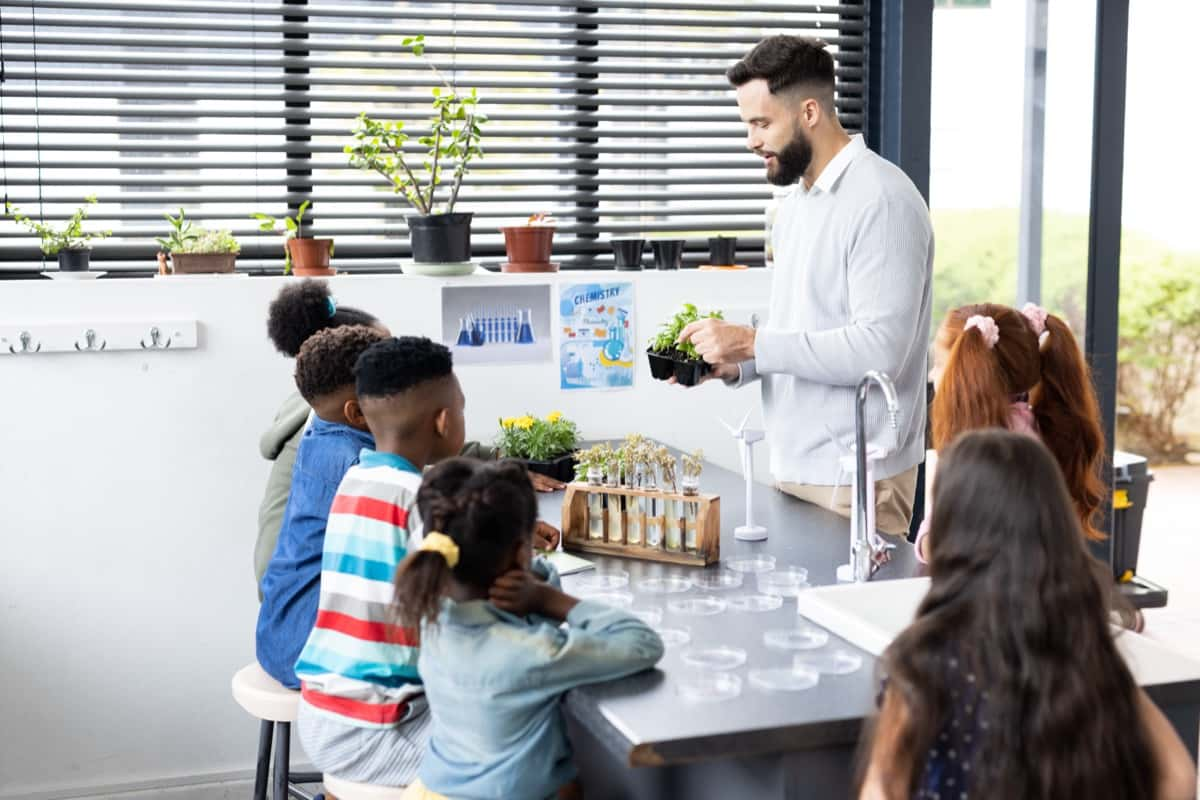
Hydroponics STEM activities engage students in interdisciplinary learning experiences that integrate science, technology, engineering, and mathematics. From designing hydroponic systems to conducting experiments on plant growth factors, these activities promote critical thinking, collaboration, and innovation, preparing students for future STEM-related careers.
Environmental Science and Sustainable Agriculture
Hydroponic gardening promotes environmental awareness and sustainable agriculture practices. Students learn about water conservation, nutrient recycling, and alternative farming methods, gaining insights into the challenges and opportunities of modern agriculture.
Maintaining Your Hydroponic Garden
Daily and weekly maintenance routines are essential for ensuring the health and productivity of a classroom hydroponic garden. Educators and students must collaborate to monitor plant growth, adjust nutrient levels, and troubleshoot common issues.
Daily and Weekly Maintenance Routines
Regular maintenance tasks include checking nutrient levels, adjusting pH and EC levels, pruning plants, and cleaning equipment. Educators can assign specific roles and responsibilities to students, fostering teamwork and accountability.
Troubleshooting Common Issues
Despite careful planning and maintenance, hydroponic gardens may encounter various challenges, such as nutrient imbalances, pest infestations, and equipment malfunctions. Educators and students must work together to identify and address these issues promptly.
Harvesting and Using Your Produce
Harvesting produce from a classroom hydroponic garden is a rewarding experience for students. Educators can incorporate lessons on food preservation, cooking, and nutrition, encouraging students to explore healthy eating habits and culinary skills.
Harvesting Techniques and Timing
Proper harvesting techniques ensure the quality and freshness of hydroponic produce. Students learn how to identify ripe fruits and vegetables, use appropriate tools for harvesting, and handle produce safely and hygienically.
From Garden to Table: Utilizing Produce in School
Hydroponic produce can be used in school meals, snacks, and culinary projects. Educators can organize cooking demonstrations, taste tests, and recipe contests, encouraging students to explore new flavors and cuisines.
Expanding the Learning Experience
Beyond the classroom, hydroponic gardening offers opportunities for community engagement, service learning, and career exploration. Educators can collaborate with local organizations, businesses, and experts to enrich the learning experience and inspire students to pursue future opportunities in hydroponics and agriculture.
Community Engagement and Service Learning
Hydroponic gardens can serve as hubs for community engagement and service learning initiatives. Students can organize garden tours, host workshops, and donate produce to local food banks, fostering connections with the broader community and promoting social responsibility.
In case you missed it: 15 DIY Aquaponic Plans You Can Build in Your Garden
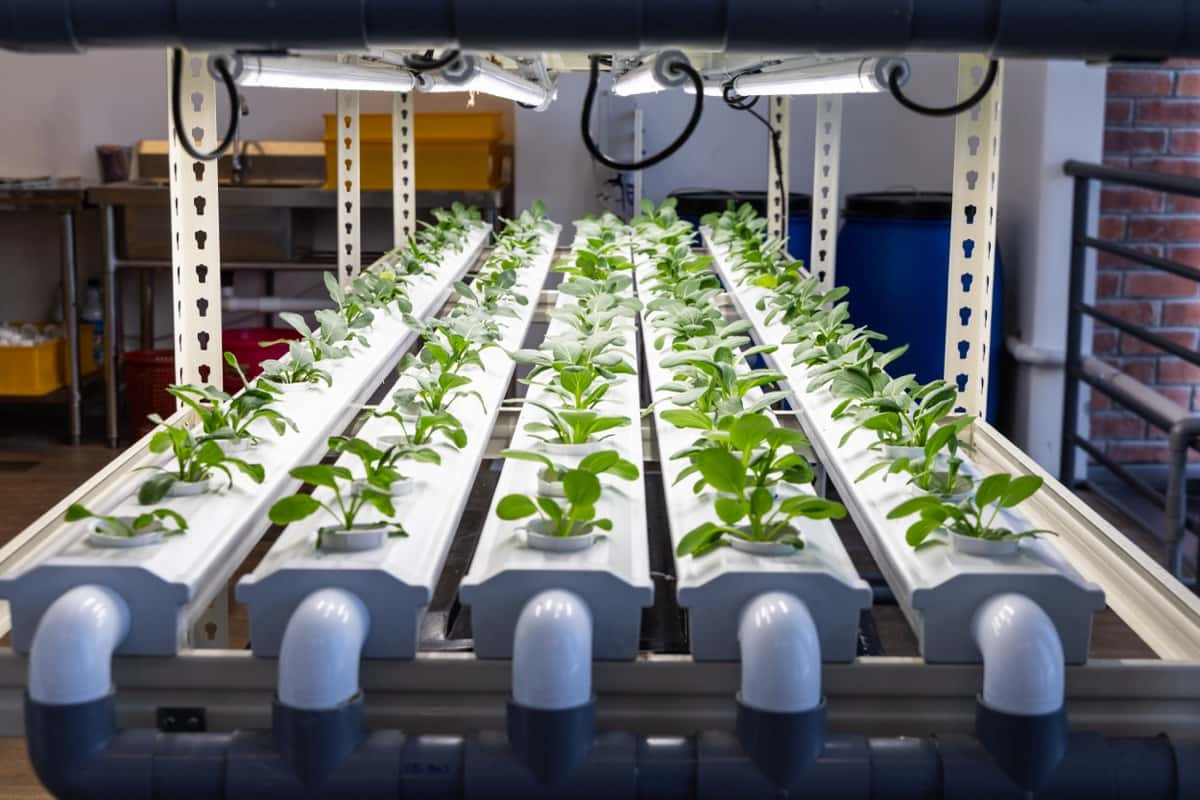
Future Opportunities in Hydroponics and Agriculture
Hydroponic gardening opens doors to exciting career paths and professional opportunities in agriculture, science, and environmental management. Students can explore fields such as agronomy, horticulture, hydrology, and sustainable development, preparing them for meaningful and impactful careers in the future.
Monitoring and Optimizing Plant Growth
Continuous monitoring, optimization are essential for maximizing plant growth and productivity in hydroponic systems. Educators and students can utilize sensors, data logging systems, and IoT technology to track environmental conditions and make informed decisions about nutrient management and plant care.
Lighting Requirements and Solutions
Lighting plays a critical role in hydroponic gardening, influencing plant growth, flowering, and fruiting. Students learn about different types of grow lights, their spectral properties, and optimal lighting schedules for various plant species.
Temperature and Humidity Control in the Classroom
Maintaining optimal temperature and humidity levels is needed for differnt plant health and growth in a classroom hydroponic garden. Students explore strategies for climate control, including ventilation, insulation, and shading, to create an ideal growing environment for their plants.
Technological Innovations in Hydroponics
Advancements in technology are transforming the field of hydroponics, offering new opportunities for automation, optimization, and sustainability. Students can learn about sensors, actuators, and control systems, as well as emerging trends such as vertical farming, aquaponics, and aeroponics.
Automating Hydroponic Systems with Technology
Automation simplifies routine tasks and enhances efficiency in hydroponic systems. Students can design and implement automated systems for nutrient delivery, irrigation, and environmental monitoring, gaining valuable experience in engineering and technology.
The Role of Sensors and IoT in Modern Hydroponics
Sensors and IoT technology enable real-time monitoring and control of hydroponic systems, optimizing resource utilization and maximizing crop yields. Students explore sensor technologies, data analysis techniques, and IoT platforms, gaining insights into the intersection of agriculture and digital innovation.
Sustainable Practices and Hydroponics
Hydroponic gardening offers opportunities for implementing sustainable practices and reducing environmental impact. Students learn about water conservation techniques, renewable energy solutions, and circular economy principles, contributing to a more resilient and eco-friendly food system.
Water Conservation Techniques
Water scarcity is a major growing concern in agriculture, making water conservation a priority for hydroponic growers. Students explore strategies for reducing water usage, such as drip irrigation, rainwater harvesting and methods, and water recycling, promoting responsible stewardship of natural resources.
Renewable Energy Sources for Hydroponic Systems
Harnessing renewable energy sources like solar, wind power can enhance the sustainability of hydroponic systems. Students learn about alternative energy technologies, their applications in agriculture, and the benefits of transitioning to clean, renewable energy sources.
Hydroponics and Global Food Systems
Hydroponic gardening has the potential to revolutionize global food systems by enabling year-round production, minimizing resource inputs, and mitigating environmental impact. Students explore the role of hydroponics in addressing food security challenges, improving nutritional access, and promoting sustainable development worldwide.
In case you missed it: How to Set Up a Nutrient Film Technique – NFT Hydroponics
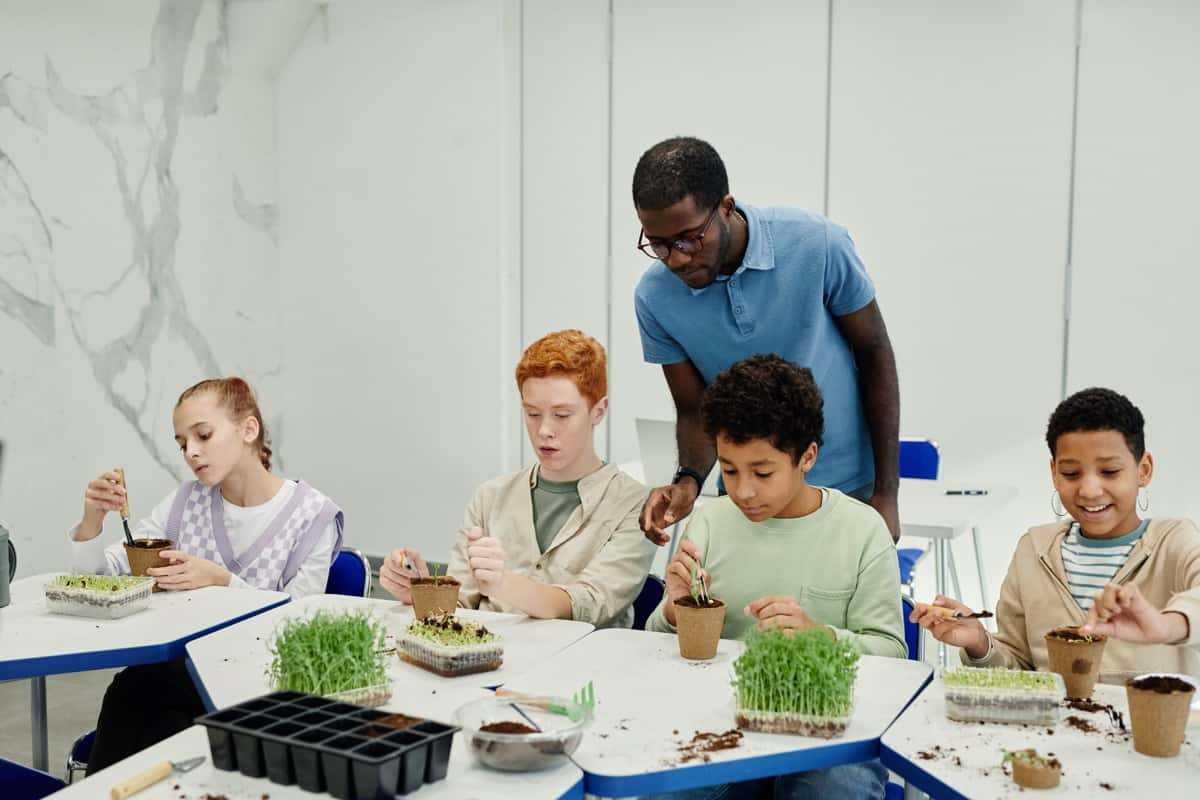
Addressing Food Deserts with Urban Hydroponics
Urban hydroponic farming offers a solution to food deserts, providing fresh, nutritious produce in densely populated areas. Students examine the socioeconomic factors contributing to food insecurity, as well as the potential of hydroponics to increase food access and promote community health and well-being.
The Impact of Hydroponics on Food Security and Sustainability
By empowering communities to grow their food locally, hydroponic gardening strengthens food security and resilience in the face of climate change, environmental disruptions. Students learn about the interconnectedness of food systems, environmental sustainability, and social justice, inspiring them to become agents of positive change in their communities.
Career Paths and Professional Skills
Hydroponic gardening cultivates a diverse range of professional skills, prepares students for rewarding careers in agriculture, science, and environmental management. Students explore career pathways in hydroponic farming, research, education, and entrepreneurship, gaining practical experience and developing transferable skills for future success.
Exploring Careers in Agriculture, Science, and Environmental Management
Hydroponic gardening opens doors to exciting career opportunities in diverse fields such as agronomy, plant physiology, greenhouse management, and sustainable agriculture. Students can pursue careers as hydroponic growers, researchers, educators, consultants, and advocates, contributing to a more resilient and sustainable food system.
Developing Entrepreneurial Skills through Hydroponic Ventures
Hydroponic gardening offers students the opportunity to develop entrepreneurial skills and explore business opportunities in the growing field of urban agriculture. Students can start their hydroponic ventures, from small-scale microgreen production to large-scale commercial hydroponic farms, leveraging their creativity, innovation, and passion for sustainability.
Conclusion
Bringing hydroponics to the classroom provides invaluable learning opportunities for students, fostering scientific inquiry, environmental stewardship, and entrepreneurial spirit. By integrating hydroponic gardening into the curriculum, educators can empower students to become future leaders in agriculture, science, and sustainability, driving positive change in their communities and beyond.
- Types of Pesticides Used in Agriculture: A Beginner’s Guide
- Economical Aquaculture: A Guide to Low-Budget Fish Farming
- 15 Common Planting Errors That Can Doom Your Fruit Trees
- How to Make Houseplants Bushy: Effective Tips and Ideas
- Innovative Strategies for Boosting Coconut Pollination and Yield
- Pollination Strategies for Maximum Pumpkin Yield
- The Complete Guide to Chicken Fattening: Strategies for Maximum Growth
- Natural Solutions for Tulip Problems: 100% Effective Remedies for Leaf and Bulb-Related Issues
- Revolutionizing Citrus Preservation: Towards a Healthier, Greener Future
- Natural Solutions for Peony Leaf and Flower Problems: 100% Effective Remedies
- Maximizing Profits with Avocado Contract Farming in India: A Comprehensive Guide
- Natural Solutions for Hydrangea Problems: 100% Effective Remedies for Leaf and Flowers
- The Ultimate Guide to Choosing the Perfect Foliage Friend: Bringing Life Indoors
- From Sunlight to Sustainability: 15 Ways to Use Solar Technology in Agriculture
- The Ultimate Guide to Dong Tao Chicken: Exploring from History to Raising
- The Eco-Friendly Makeover: How to Convert Your Unused Swimming Pool into a Fish Pond
- Mastering the Art of Delaware Chicken Farming: Essentials for Healthy Backyard Flocks
- 20 Best Homemade Fertilizers for Money Plant: DIY Recipes and Application Methods
- How to Craft a Comprehensive Free-Range Chicken Farming Business Plan
- Brighten Your Flock: Raising Easter Egger Chickens for Beauty and Bounty
- How to Optimize Your Poultry Egg Farm Business Plan with These Strategies
- Subsidy for Spirulina Cultivation: How Indian Government Schemes Encouraging Spirulina Farmers
- Ultimate Guide to Raising Dominique Chickens: Breeding, Feeding, Egg-Production, and Care
- Mastering the Art of Raising Jersey Giant Chickens: Care, Feeding, and More
- Ultimate Guide to Raising Legbar Chickens: Breeding, Farming Practices, Diet, Egg-Production
- How to Raise Welsummer Chickens: A Comprehensive Guide for Beginners
- How to Protect Indoor Plants in Winter: A Comprehensive Guide
- Ultimate Guide to Grow Bag Gardening: Tips, Tricks, and Planting Ideas for Urban Gardeners
- Guide to Lotus Cultivation: How to Propagate, Plant, Grow, Care, Cost, and Profit
- Agriculture Drone Subsidy Scheme: Government Kisan Subsidy, License, and How to Apply Online
- Ultimate Guide to Raising Araucana Chickens: Breed Profile, Farming Economics, Diet, and Care
- Bringing Hydroponics to Classroom: Importance, Benefits of Learning for School Students
- Ultimate Guide to Raising Polish Chickens: Breed Profile, Farming Economics, Diet, and Care
- Ultimate Guide to Raising Australorp Chickens: Profile, Farming Economics, Egg Production, Diet, and Care
- Silkie Chicken Farming: Raising Practices, Varieties, Egg Production, Diet, and Care
- Sussex Chicken Farming: Raising Practices, Varieties, Egg Production, Diet and Care